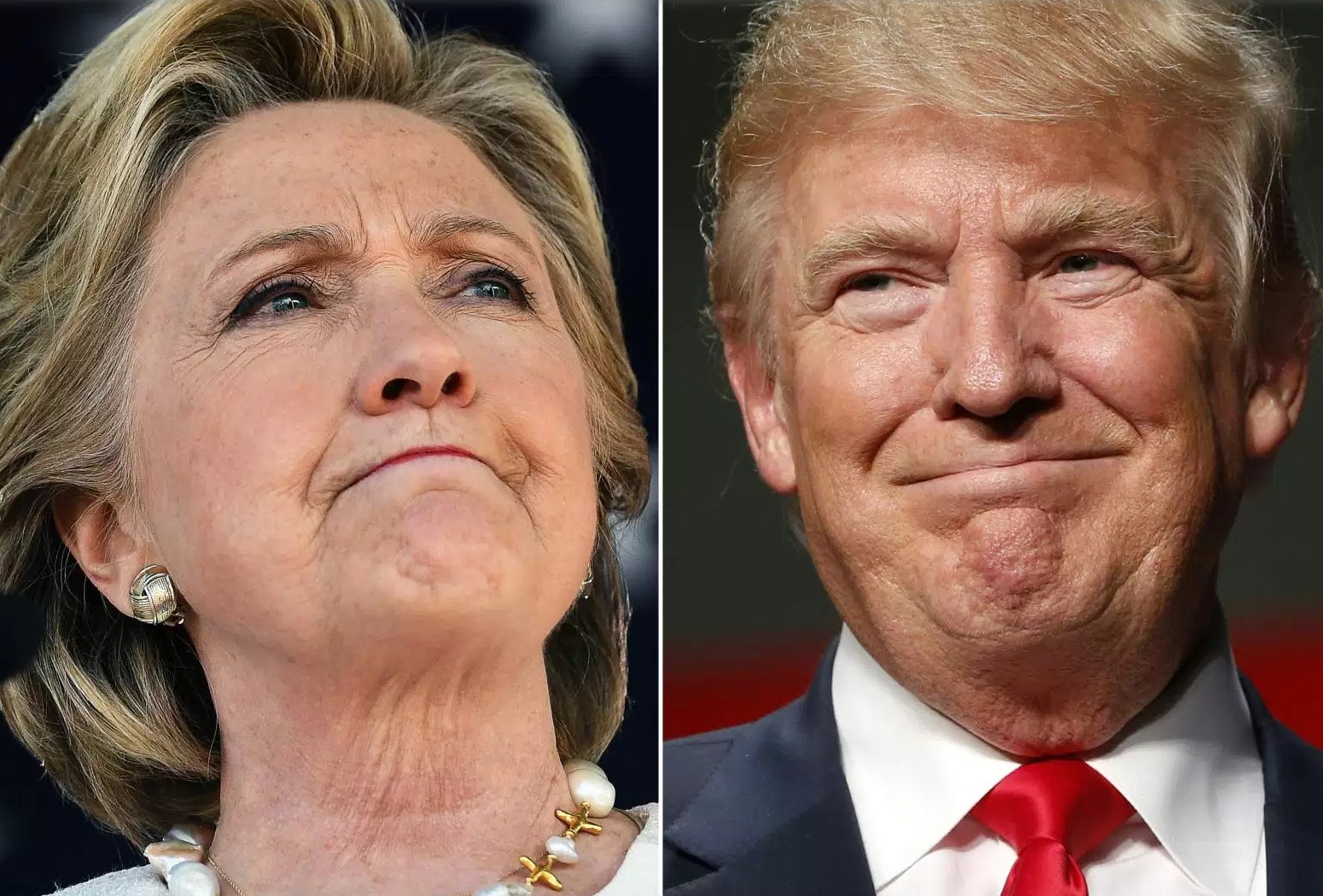
In this 2016 election scenario, neither Donald Trump nor Hillary Clinton receives 270 Electoral College votes. (270toWin.com)
America is just hours away from choosing its next president, but as we know, winning a majority of votes doesn’t necessarily get a candidate elected. Rather, the contest comes down to winning states and their electors, and whoever reaches 270 votes in the Electoral College emerges victorious. It is actually possible for nobody to get that many votes, though. What happens in that scenario? Who becomes president?
As is outlined in the 12th Amendment to the Constitution, if both candidates fail to reach 270 electoral votes, the election goes to Congress. The newly-elected House of Representatives selects the president from the three individuals who received the most Electoral votes. This means that a third party candidate like Gary Johnson or Evan McMullin would technically be an option if they were able to win a state. Each state delegation gets one vote in the House contest, so it’s not as if all 435 members are voting individually. Instead, the whole state delegation gets a single vote for president.
Republicans currently control the House of Representatives, and Democrats are not expected to win it back this year, so the scenario where no one hits 270 would likely be good for Donald Trump unless there is some sort of Republican revolt against the nominee. After all, the state delegations have absolutely no obligation to vote for the person who won their state, so if Evan McMullin were to win Utah and therefore become eligible in the House contest, some delegations could theoretically rebel against Trump and pick McMullin instead. If the House can’t decide on a new president by the time Inauguration Day rolls around, the Vice President Elect will serve as president until the situation is resolved. If a vice president hasn’t been selected either, the speaker of the House serves as president for the time being.
Speaking of vice president, how is that person selected? Although the presidential contest goes to the House of Representatives when no candidate reaches 270 Electoral Votes, it’s the Senate that gets to choose the vice president if this occurs, with senators picking among the two individuals who received the most electors in the Electoral Congress. Each of the 100 senators gets a vote. Like the House, the Senate is also controlled by Republicans, with the GOP occupying 54 seats compared to the Democrats’ 44 seats. But it’s the new Senate that picks the vice president, not the old one, and there is a substantial chance that the Democrats will win back control of it this year. If that happens, we could be looking at a Donald Trump/Tim Kaine White House.
So how likely is this to happen? Not very, but it isn’t completely out of the realm of possibility. Here’s how it could work: Donald Trump wins Florida, North Carolina, Ohio, Arizona, Nevada, Iowa, and New Hampshire, but Hillary Clinton wins Michigan, Pennsylvania and Virginia. With this map, Hillary Clinton and Donald Trump both have 269 Electoral College votes. Another possibility would be if Evan McMullin won Utah and by doing so denied both Trump and Clinton enough votes to get a majority. McMullin has found himself in the lead in some Utah polls, and he has made it explicitly clear that throwing the election to Congress is precisely his plan to become president. He’s betting on this happening and on House Republicans deciding to select an alternative to Donald Trump.
These are all pretty wild outcomes, though, and FiveThirtyEight calculates that there’s only a one percent chance of neither Donald Trump nor Hillary Clinton reaching 270 Electoral College votes. They also forecast that there’s a 0.6 percent chance of an exact 269 to 269 tie.
No presidential candidate winning in the Electoral College has happened before, although not in modern times. The first time it occurred was in 1800, an election which was a battle between Thomas Jefferson, running with Aaron Burr, and John Adams, running with Charles Pinckney. Originally, Electoral College members would actually vote for two names for president, with the candidate who got the most votes becoming president and the candidate who got the second most votes becoming vice president. In 1800, the Democratic-Republican electors wanted Thomas Jefferson to be president and Aaron Burr to be vice president. Their plan was to have have everyone vote for Jefferson and Burr except for one man, who would vote for Thomas Jefferson but intentionally leave the second name blank instead of writing Burr. This would therefore guarantee that Jefferson came in exactly one vote ahead of Burr. But things did not go according to plan; all of the Democratic-Republican electors ended up voting for both Jefferson and Burr, and the result was a tie. The election went to Congress, and after 35 unsuccessful votes, Jefferson was finally selected as president. It was specifically because of this disaster that the 12th Amendment was enacted.
No candidate received a majority of electors in the 1824 election either, and this was the only time the new system of throwing the election to Congress was actually utilized. There were four candidates running that year: John Quincy Adams, Andrew Jackson, William Crawford and Henry Clay. Andrew Jackson received the most votes, but since these votes were split between all four candidates, nobody got a majority. When the election went into the House of Representatives, John Quincy Adams was chosen as president even though Andrew Jackson got more votes than he did. Jackson declared this a “corrupt bargain,” and he came back four years later to defeat John Quincy Adams in the 1828 election.
Read more about the electoral college in Spanish at AhoraMismo.com:
